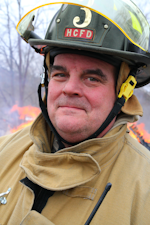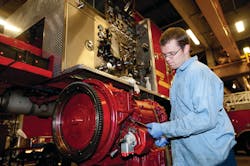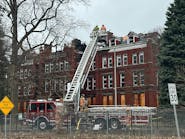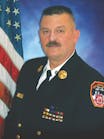When it comes to fire apparatus maintenance, you would be correct to think that equipment required to meet emissions standards was challenging. You would also be correct to think that aging apparatus are causing headaches, but one of the biggest issues may be surprising: Fire departments from coast to coast are having trouble finding qualified mechanics to work on apparatus. There is a shortage of heavy-equipment mechanics and the few out there often migrate to the private sector for more pay and better benefits.
“Across the board, the number-one maintenance issue for us is having a qualified pool of maintenance mechanics,” said Division Chief Craig Weeks, the head of Fire Fleet Services for the Los Angeles County, CA, Fire Department, who oversees a staff of about 50 mechanics.
Firehouse® Magazine interviewed fleet-maintenance personnel around the country to learn about the challenges departments face in keeping rigs on the road. In addition to Weeks, for this roundtable we talked to Mike Stankus, maintenance manager for King County, WA, Fire District 44; Tyler Chambers, lead mechanic for the City of Tulsa, OK, Equipment Management Department, working for the city’s fire department; and Bill Miller, certified Emergency Vehicle Technician (EVT) for the Wellesley and Westwood fire departments in Massachusetts and president and treasurer of the New England Fire Apparatus Maintenance Association.
MIKE STANKUS
For the past 35 years, Stankus has been a mechanic and welder. In 2007, he was named the nation’s EVT of the Year. These days, he responsible for maintaining apparatus and equipment in eight stations, which includes 18 pumpers and tenders, two rescue units, three brush units, four cars, a boat, an all-terrain vehicle (ATV) and other equipment. Some of the biggest challenges he faces are presented by new apparatus that comply with 2010 federal emissions standards.
“The emissions systems are causing a lot of problems for a lot of departments,” said Stankus, who is also chairman and education coordinator for Washington Fire Mechanics. Ironically, just as departments are becoming accustomed to working with emissions equipment and its maintenance, Stankus said he is hearing officials may retract the standards.
“We went down that long road to compliance; now, how are we going to go backwards?” Stankus said.
Stankus said he is an advocate of standardizing fleets. “It’s very important to me for service and for parts interchangeability,” Stankus said. Regular, routine maintenance is also vital, he said, adding that his regimen includes full service every 250 hours or 3,000 miles, whichever comes first.
A tag line on Stankus’ emails reads: “We might not be the pride of the fire service, but without us, the pride don’t ride.” And that sums up his philosophy on apparatus maintenance.
CRAIG WEEKS
Weeks has been with the Los Angeles County Fire Department since 1994. He remembers the day when there were literally dozens of applicants for a half-dozen openings in fleet maintenance. Today, the department may not have more than a handful of applicants for a like number of openings.
“It takes us quite a long time for us to promulgate a list of five or six qualified candidates,” Weeks said. “…Nearly everywhere around here are help-wanted signs for technicians.”
In his shop, there are 50 technicians and there often are needs for new technicians. That’s why the department developed a relationship with the community college program to recruit technicians. He hopes to renew that program in 2013. He will need the help to keep the department’s 1,700 pieces of rolling equipment maintained, including at least 600 primary apparatus.
“Everything that is one ton or less we contract out…but we still have a lot of work,” Weeks said, noting that everything else is done in house.
Unlike some departments, Los Angeles County is not experiencing headaches with emissions systems and he can attribute it to a decision the department made that has paid off.
“We opted for smaller-displacement engines with higher horsepower,” Weeks said, explaining that the engines run faster and at higher temperatures, which makes for fewer regenerations and happier emissions systems. “We’ve had no, major, complex problems.”
Weeks is not a fan of multiplexing for apparatus and he avoids it whenever possible. Specifications for new apparatus specifically say no multiplex electrical systems, except where absolutely necessary for engine and transmission controls.
“We need to be able to diagnose and repair apparatus that may be three or four miles off the highway,” Weeks said, noting that some wildland strike teams travel up to 500 miles, a long way from their home repair shop, to fight wildland fires.
With the ability to go out to bid for as many as 15 apparatus at a time, Weeks said he has not had problems with manufacturers balking at the no-multiplexing request. “We have a little more leverage than most,” he said.
For Weeks, apparatus maintenance today is all about being resourceful and looking for ways to save money, but never compromising safety.
“To me, apparatus are not parade pieces, they’re not showpieces,” Weeks said. “Everything on an apparatus needs to serve a mission to the community.”
TYLER CHAMBERS
Just about in the center of the country, Tyler Chambers is the civilian lead mechanic for the fire department’s division of Tulsa’s fleet service. He too has a challenging time finding top-flight EVTs. Moreover, city officials are not sold on the fact that it is necessary to have certified EVTs. “They think it’s more of a voluntary kind of thing,” Chambers said, adding that the fire department is all for having certified EVTs working on rigs.
When he comes up with qualified heavy-equipment mechanics, they are often stolen away by another department in the city or other agency. “Yes sir, it’s a problem,” Chambers said. In his shop of seven, just he and one other person are EVT certified.
“Trucks these days are so complex that sometimes when we get mechanics in here they don’t have a clue how to work on a fire truck,” Chambers said, noting that he is a strong advocate for EVT certification, something he had for decades, and preaches to its merits whenever he has a chance.
Even more of a challenge is high mileage being put on fire trucks in Tulsa.
“The major trouble we have is an increase in call volume,” Chambers said. “The department has started to make medical calls (responding with a private ambulance company). That has doubled the miles on the trucks.”
Chambers said the extra mileage is taking a toll on the apparatus with increased frequency of brake jobs and general wear and tear. To save money on brake jobs, Chambers said Tulsa is specifying trucks with electromagnetic brake retarders. “We’ve doubled the brake life on the trucks,” he said.
Finding a solution to resolving problems with engine performance hasn’t been as easy, Chambers said.
“Firefighters count on apparatus to work,” Chambers said. “They trust their lives, and the lives of people in the community, on them working as they should. We have an obligation to maintain that trust.”
BILL MILLER
Up in New England, Bill Miller has some different challenges. Salt, used for melting ice and snow, eats up apparatus, as do the short runs his suburban Boston department experiences.
Miller works full time for the Wellesley, MA, Fire Department, as the sole mechanic, a position he has had about three years and works part time for the Westwood Fire Department for more than 25 years. During those decades as a mechanic, he has learned the best way to get good service out of apparatus is to buy the heaviest-duty truck possible from a quality vendor.
“I tell people to buy trucks with big motors, thick bodies and heavy duty and they’ll last longer,” Miller said, noting they won’t be as difficult to maintain either. “I try to tell people that the $180,000, $190,000 trucks aren’t going to hold up and they’ll give you trouble over the years…The way we treat stuff in the fire service, it’s not conducive to long life anyway.”
Miller is a strong proponent of EVT-certified people working on apparatus. “We need to work closely with the chiefs to help them understand the importance of certified technicians,” he said. Miller said he preaches safety and the need for certification in his capacity as the president of the 396-member New England Fire Apparatus Maintenance Association.
The association hosts annual training in conjunction with the New England Fire Chiefs Association to make sure mechanics are up to speed on the latest information, techniques and equipment available.
And some of the latest technology isn’t the greatest, in Miller’s mind, particularly the 2010 emission standards. In his community, a long run is five miles on a mutual aid call to another community, which does not give apparatus time to heat up and do the passive regeneration trucks do as they drive down the road. That means the apparatus with the latest emissions equipment in his fleet have to have active regeneration requiring them to be run at higher rpm on the front apron for 30 to 40 minutes.
For Miller, maintenance begins when the apparatus is specified. He recommends departments select manufacturers based on their service systems and their local inventory of parts and their availability.
Apparatus maintenance for Miller comes down to “do the right thing.” For instance, don’t do a one-wheel brake job on an apparatus to save money,” he said. Keep good equipment in good repair and it will perform as it should for decades, he said.
“Don’t gamble with apparatus maintenance,” Miller said. “Because when you gamble, and lose, it really hurts.”
This is an excerpted version of the roundtable; the complete discussion is available at firehouse.com/0113-apparatus.
ED BALLAM, a staff writer for Firehouse.com, is a firefighter with the Haverhill Corner, NH, Fire Department, a nationally certified EMT, and holds certifications in emergency vehicle operations and pump operations.

Ed Ballam
Ed Ballam served as associate editor for Firehouse. He is the assistant chief of the Haverhill Corner, N.H. Fire Department, and a National Registered EMT. He is also a Deputy Forest Fire Warden for the New Hampshire Division of Forests and Lands. Professionally, he's been a journalist for over 35 years working for a variety of publications, including employment as managing editor of a national fire service trade journal for more than a decade.






